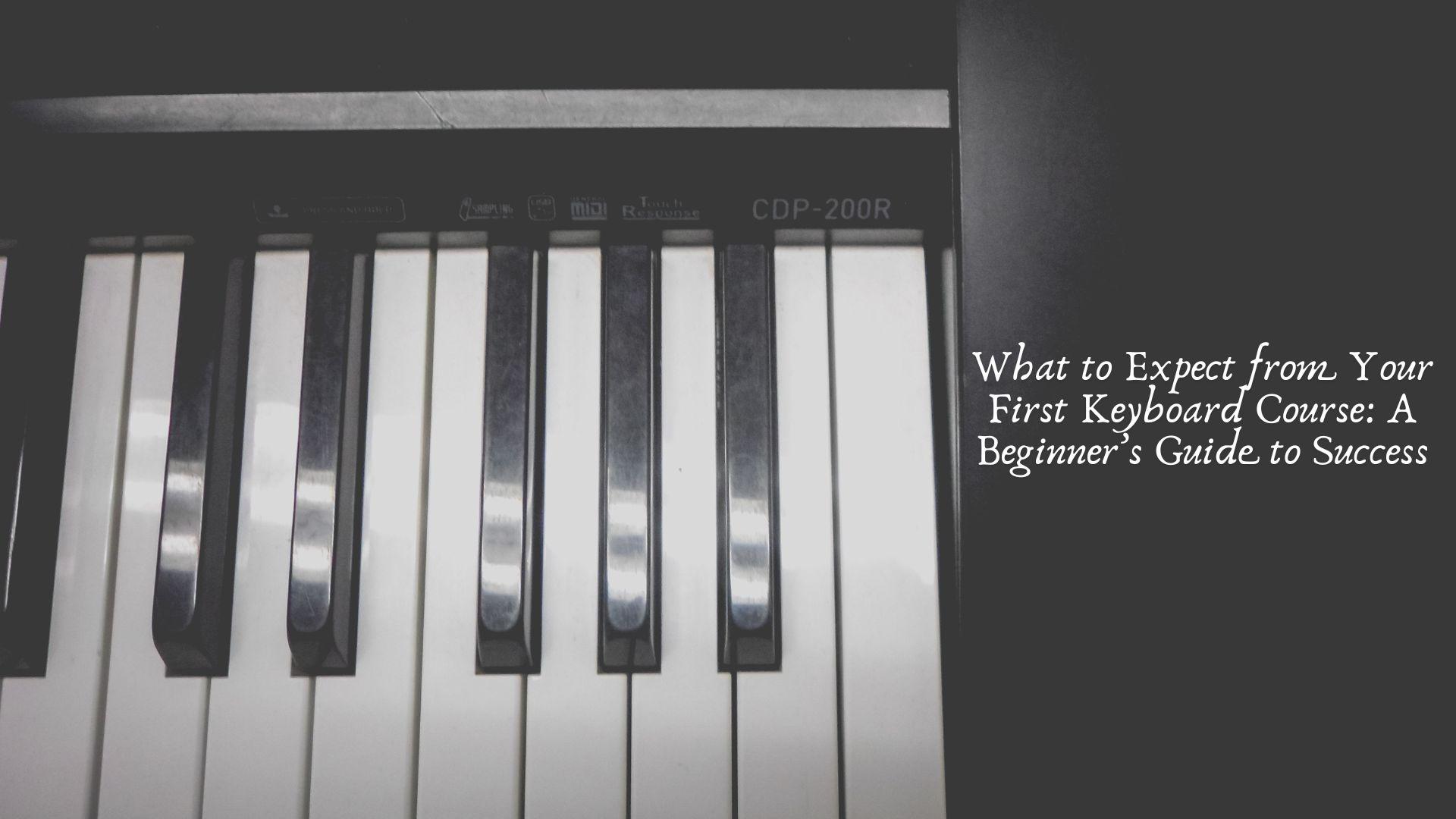If you’re about to start your first keyboard course, congratulations! You’re embarking on an exciting musical journey that can be both rewarding and fun. Whether your goal is to play your favorite songs, compose original music, or eventually perform for an audience, your first keyboard course is the essential foundation for all future progress. In this article, we’ll walk you through what you can expect from your first keyboard course so you can begin with confidence and clarity.
Understanding the Basics of the Keyboard
Your first few lessons will typically focus on getting you familiar with the layout and function of the keyboard. You’ll learn:
-
The names of the white and black keys
-
How to identify middle C
-
Basic hand positioning and posture
-
Simple finger numbering (1 for the thumb through 5 for the pinky)
These are small but crucial steps that lay the groundwork for more advanced skills later.
Learning to Read Music
One of the key components of most keyboard courses is reading sheet music. Don’t worry if you have no prior experience—your instructor or course material will start with:
-
The musical alphabet (A-G)
-
Understanding the staff, clefs (typically treble and bass), and notes
-
Basic rhythms such as quarter notes, half notes, and whole notes
-
Time signatures and simple counting
Developing the ability to read music takes time, but even a few weeks of consistent practice can lead to noticeable improvement.
Developing Coordination and Technique
One of the challenges of playing the keyboard is using both hands at the same time. Your early lessons will likely introduce:
-
Simple one-handed melodies
-
Basic exercises like finger warm-ups and five-finger scales
-
Introduction to playing with both hands together
-
Understanding dynamics (playing loud and soft)
Building coordination takes patience, but as your muscle memory develops, you’ll begin to feel more natural and confident.
Playing Simple Songs
Nothing is more motivating than actually playing music! Expect your first course to introduce:
-
Easy, recognizable melodies like “Twinkle Twinkle Little Star” or “Ode to Joy”
-
Simple left-hand accompaniment patterns such as playing root notes or basic chords
-
Duet playing with your teacher or audio tracks to help develop rhythm and timing
This is where you begin to feel like a musician, even with just a few notes.
Basic Music Theory
A good keyboard course will introduce fundamental music theory concepts that help you understand what you’re playing. These might include:
-
Major and minor scales
-
Intervals (the distance between two notes)
-
Basic chord structures (triads)
-
Key signatures and transposition
While this might seem academic at first, theory gives you the tools to eventually create and understand music on a deeper level.
Using Technology and Tools
Modern keyboard courses often make use of technology to aid learning. This may involve:
-
Digital keyboards with built-in learning modes
-
Apps and software for practice and play-along
-
Online video lessons and tutorials
-
Metronomes for rhythm training
These tools make the learning process more interactive and enjoyable, especially for younger students or tech-savvy learners.
Practice Expectations
To succeed in your first keyboard course, regular practice is essential. A beginner course might recommend:
-
Practicing 15–30 minutes a day
-
Setting clear, manageable goals for each session
-
Using repetition to build muscle memory
-
Keeping a practice journal to track progress
Consistency is far more important than long, infrequent sessions. Your teacher or course may provide a structured practice schedule.
Receiving Feedback and Making Adjustments
Whether you’re in a live class or taking an online course, feedback is critical to improvement. Be prepared for:
-
Constructive corrections on posture, finger technique, or rhythm
-
Repetition of exercises until they are mastered
-
Encouragement and positive reinforcement from instructors
-
Occasional plateaus or frustrations—these are normal and temporary
The key is to stay open to feedback and trust the process.
Building Confidence
As you progress through the course, your confidence will naturally grow. You may begin to:
-
Play in front of family or friends
-
Record your performances
-
Recognize patterns and chords in songs you hear on the radio
-
Experiment with creating your own melodies
These small victories make a big impact on your motivation and love for music.
Looking Ahead: What Comes Next
By the end of your first keyboard course, you’ll have a solid foundation to build upon. From here, you might choose to:
-
Advance to an intermediate course
-
Focus on a specific genre such as classical, jazz, or pop
-
Learn improvisation or songwriting
-
Join a music group or perform solo
Whatever your goals, your first course opens the door to a world of musical opportunities.
Final Thoughts
Starting a keyboard course is an exciting step toward unlocking your musical potential. With structured lessons, consistent practice, and the right mindset, you’ll be amazed at how quickly you can progress. Remember, every great musician was once a beginner. Be patient, stay curious, and enjoy the journey.



